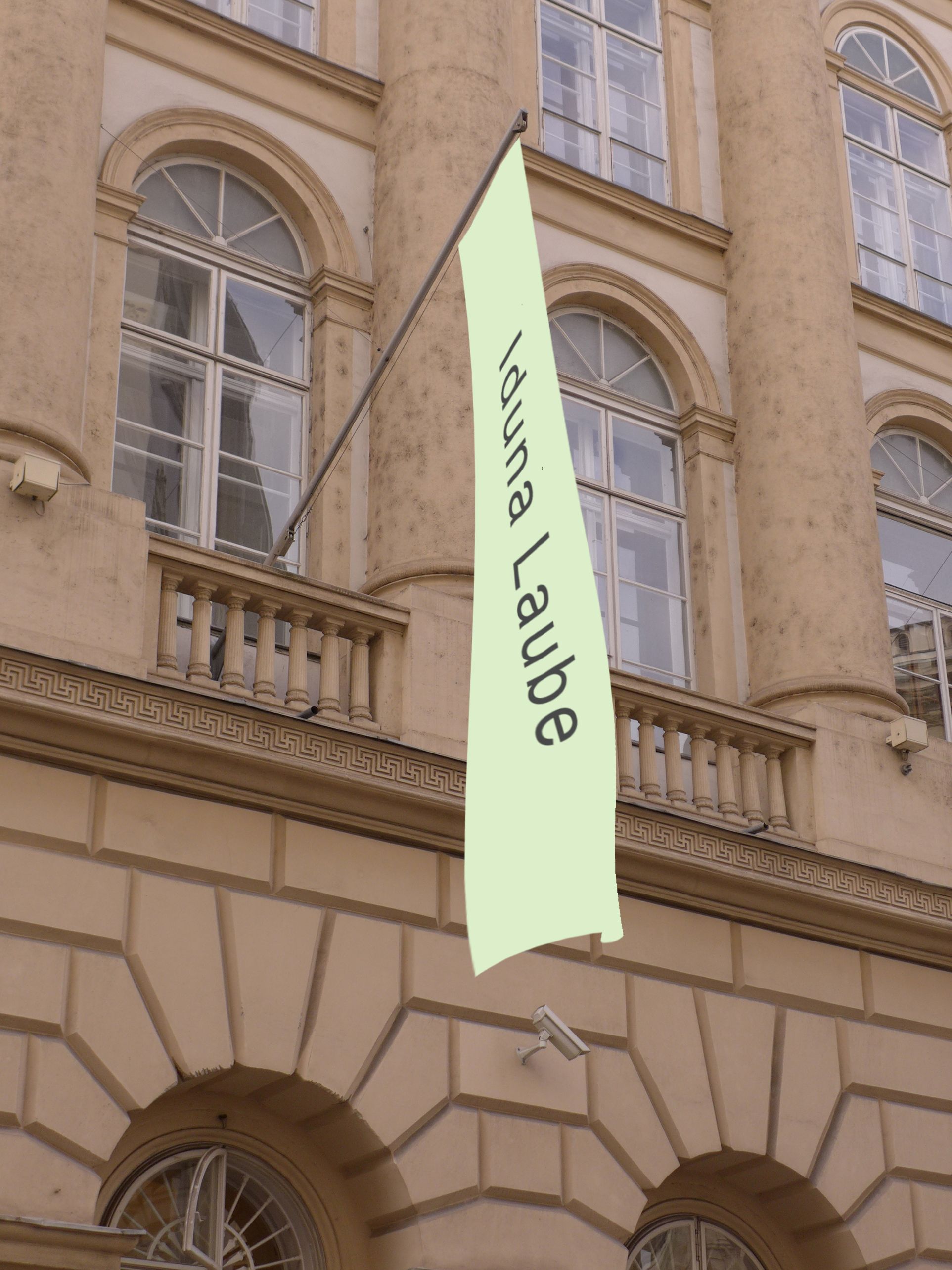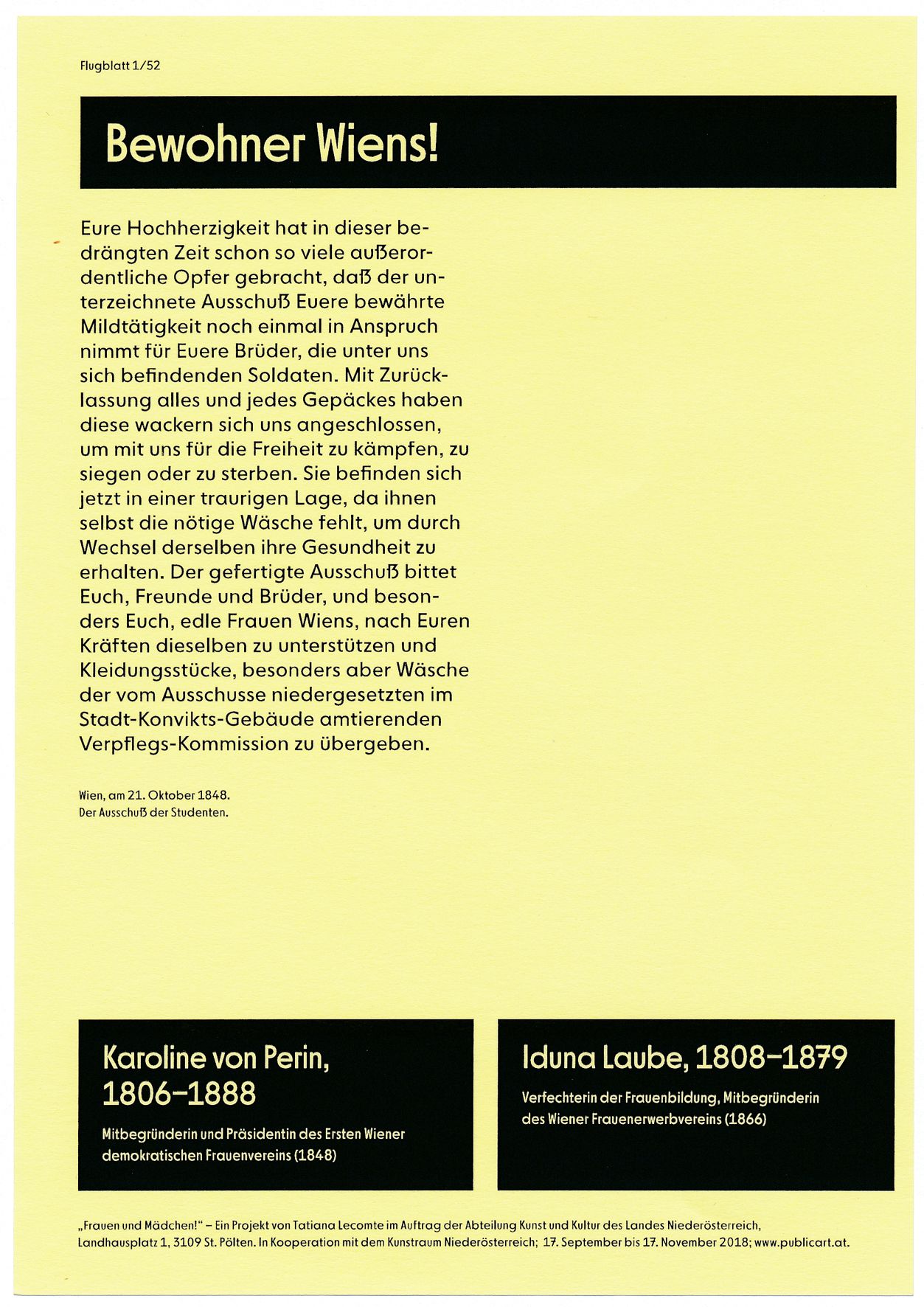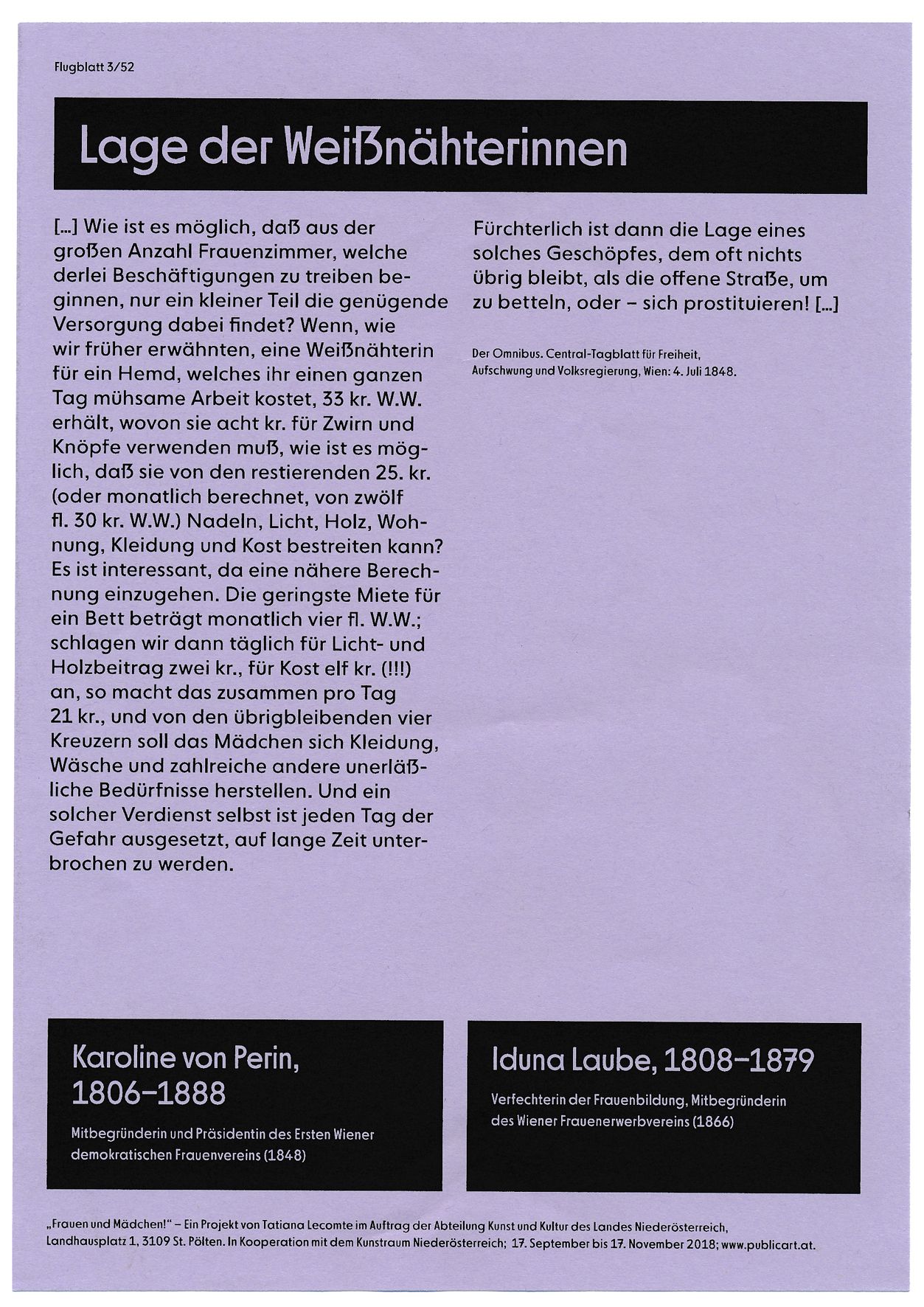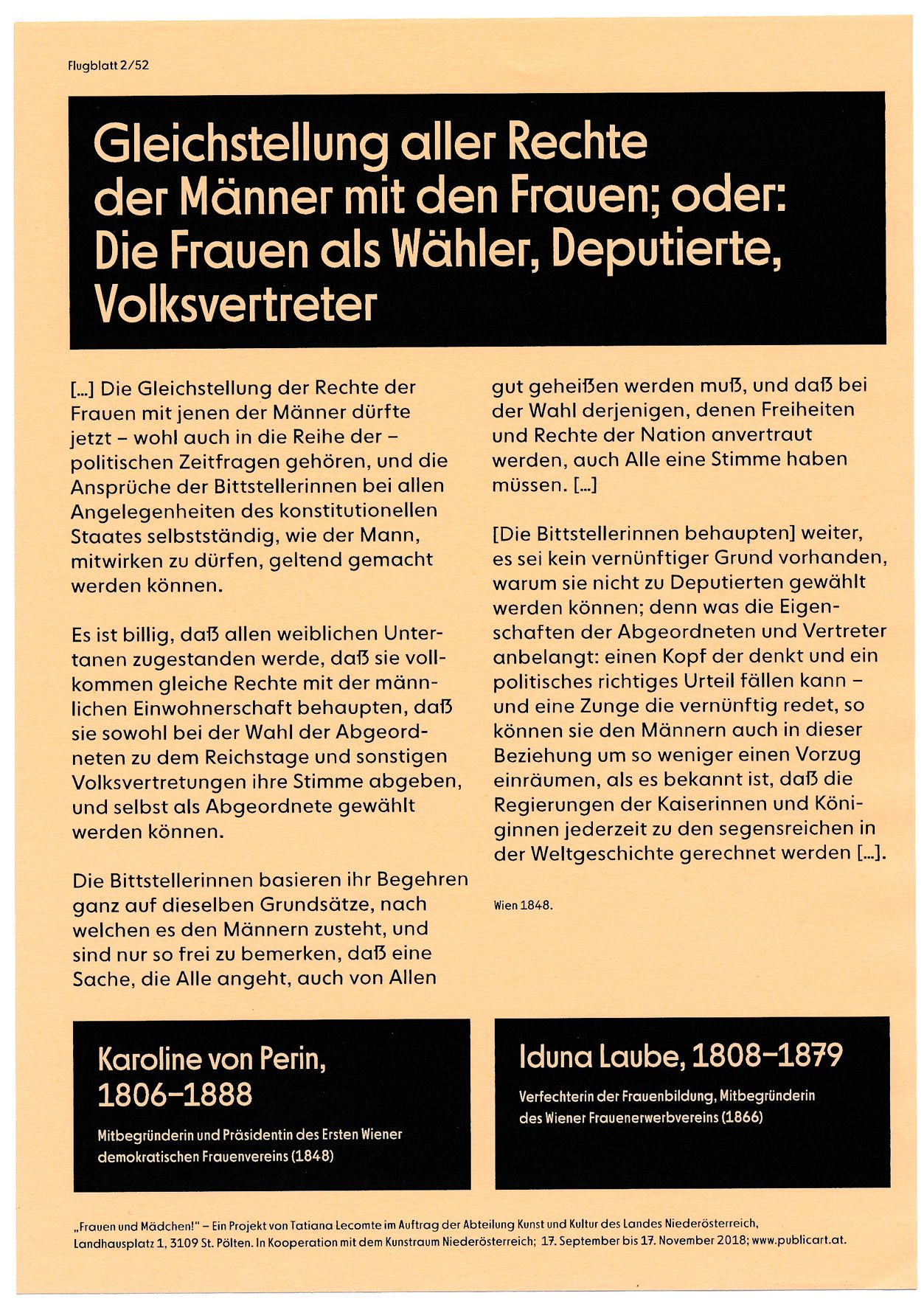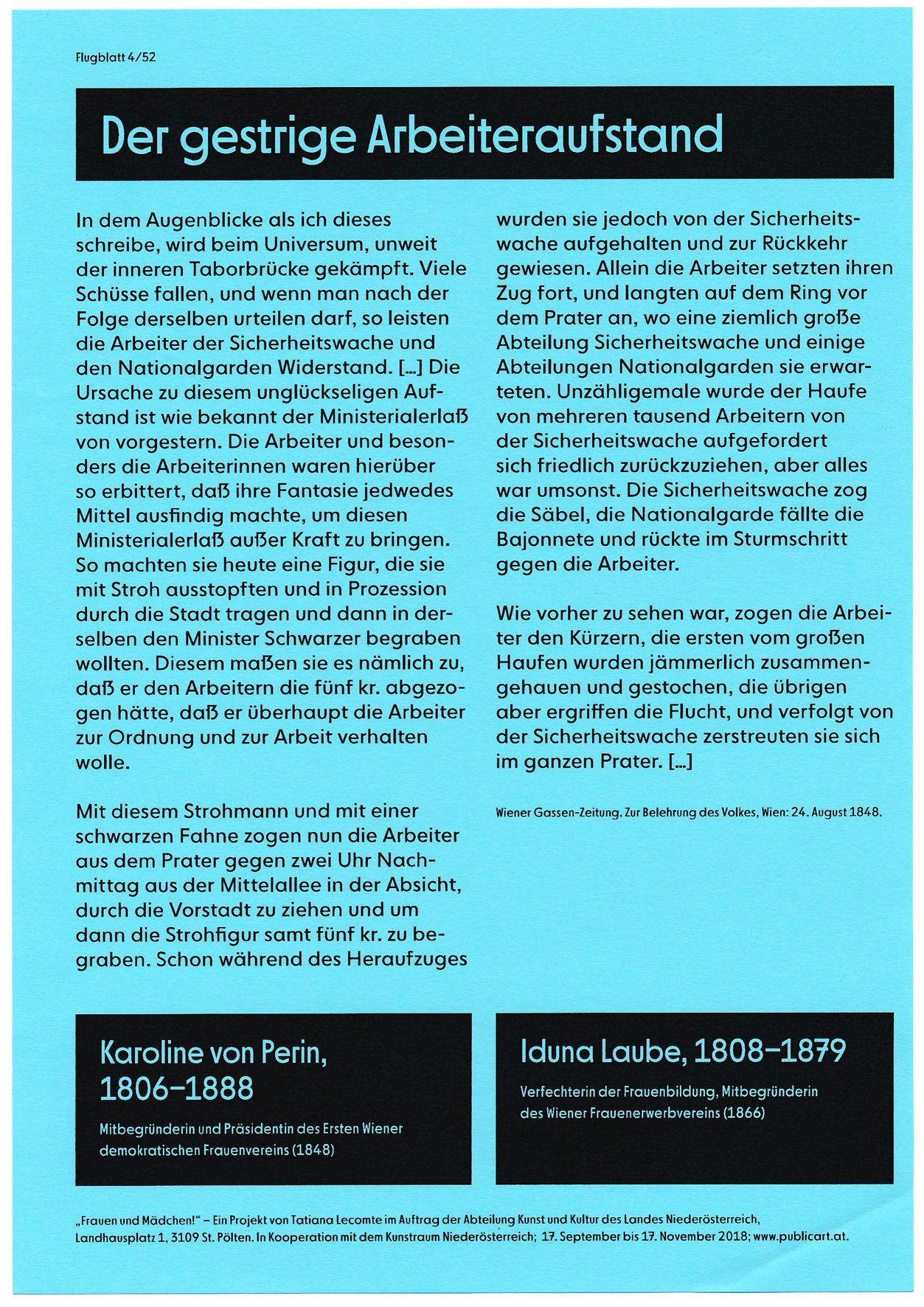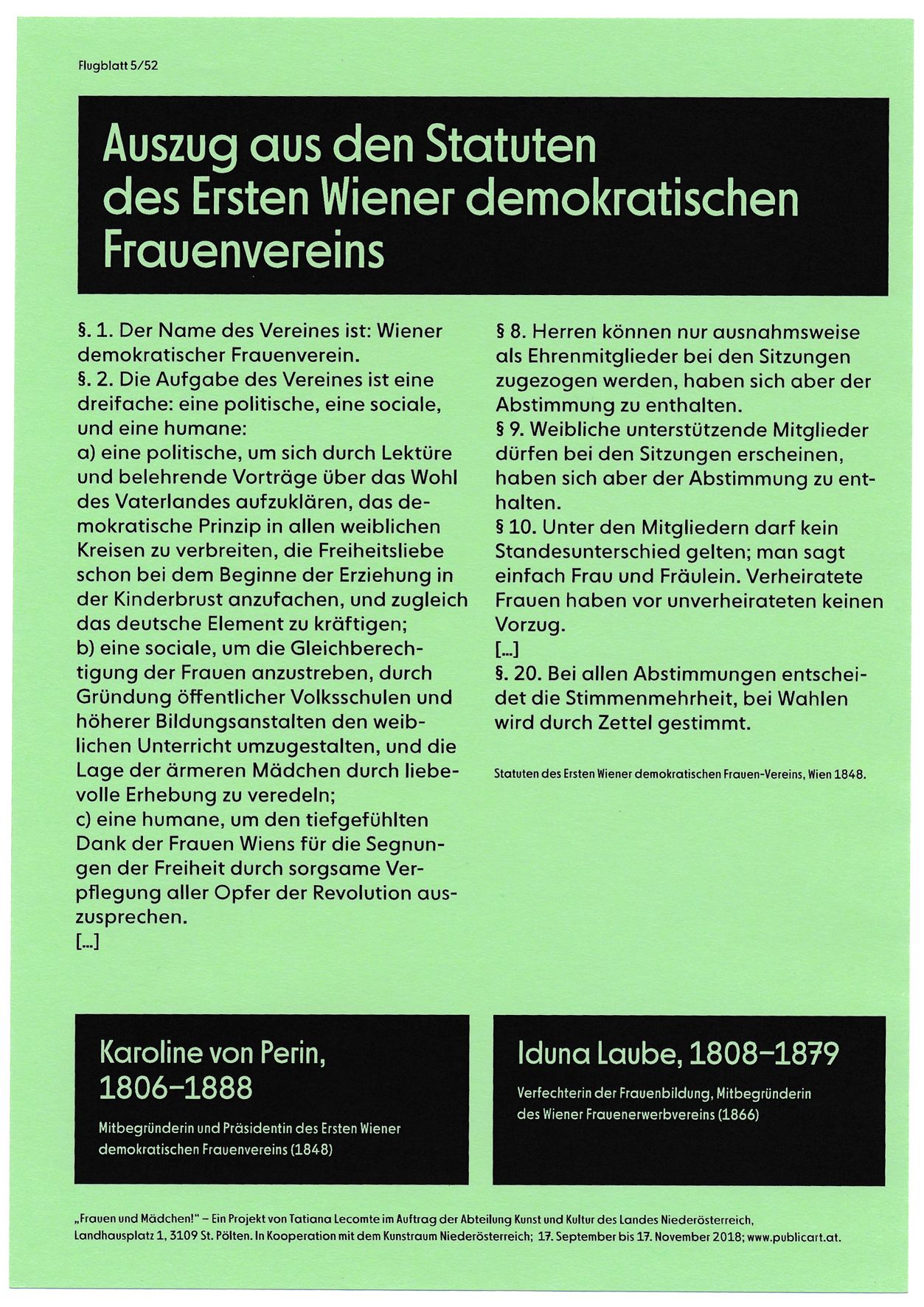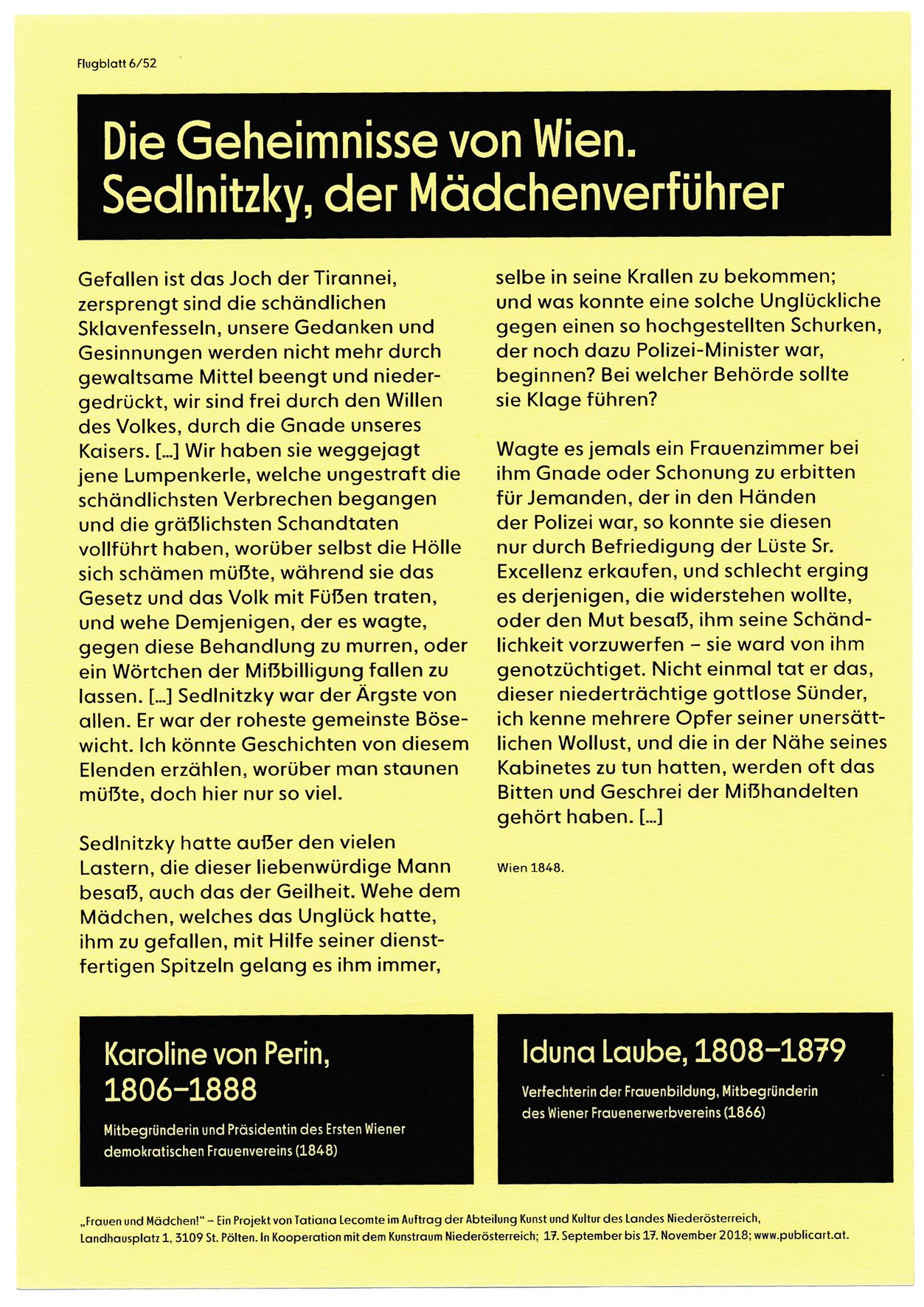Tatiana Lecomte
:
„Frauen und Mädchen!“
Back
Information
“It is equitable that all female subjects be accorded exactly the same rights as the male population.”[1]
“Mrs. Pauli […] called on women to form organizations to create an effective and united front against reaction and terror, the greatest enemies of women’s freedom.”[2]
Tatiana Lecomte selected these two quotes, along with 50 other passages, taken from journals, lectures, and petitions to serve as reminders of the 70 years, from 1848 to 1918, of the fight for women’s rights in Austria—70 years during which women were not allowed to form organizations or campaign for their right to political participation, but also 70 years during which they nonetheless found ways to raise public awareness of their concerns. Lecomte printed the quotes, whose authors are generally unknown, on flyers, which were handed out in front of the Palais Niederösterreich over a period of two months. Additionally, a new flag was raised every week to commemorate one of the representatives of the Austrian women’s movement. With her project, the artist intervened in the official politics of remembrance in the public realm. She turned the spotlight on women and their fight for equality without creating a monument for them in the traditional sense. Instead, the ephemeral project acted as a counterpoint to the longevity of monuments. Lecomte’s flyers referred back to the media strategies used already in 1848 to raise awareness of revolutionary causes. Instead of concentrating her commemoration on a single location, Lecomte let the flyers with historical quotes spread all over the city. Furthermore, she did not commemorate one great woman; she called attention to the efforts of countless women, many of whose names we do not even know.
The quotes from the beginning suggest that the history of emancipation had a narrative arc, with a beginning, a climax, and a happy end. Although the flyers with the quotes were distributed in a chronological order, they were not meant to tell a linear story. Instead, they let many different voices be heard and highlighted various interests. For example, there were labor movement representatives, landowners, teachers, artists, and leaders of Catholic and Jewish social welfare organizations. Some of the quotes were also from men who supported the women’s cause, or who wanted to maintain the status quo. Despite their temporary nature, the flyers lent the selected passages taken from past debates a new form and a new materiality. The placement of several quotes next to each other without comment also corresponded to the principle of montage, which for the last few years the artist has been using as a formal strategy for found photographs as a way of analyzing racist image politics and the question of whether historical events can be represented through photography. Walter Benjamin regarded montage as a model for a different form of writing, like the one he used in his book Arcades Project, which was intended to consist only of quotes. As he sums up: “Method of this project: literary montage. I needn’t say anything, merely show.”[3]
[1] “Gleichstellung der Rechte der Frauen mit jenen der Männer” (The Same Rights for Women and Men), pamphlet, Vienna, 1848.
[2] “Erste politische Versammlung des allgemeinen österreichischen Frauenvereins” (First Political Assembly of the General Austrian Women’s Association), Zeitschrift für Frauen-Stimmrecht, Vienna: December 1918.
[3] Walter Benjamin, The Arcades Project, trans. Howard Eiland and Kevin McLaughlin (Cambridge, MA and London: The Belknap Press of Harvard University, 1999), 460. Emphasis in original.
-----------------------------------
In her project, Tatiana Lecomte shed new light on messages from the past without measuring them according to their relevance today. This consistent focus on the contemporary perspective of activists from the past marks the difference between Lecomte’s approach and traditional forms of historiography. Just like how we do not know what will happen in a certain year—which ideas will prevail, and which people will become more influential—these quotes contained predictions for the future that turned out to be wrong. They thus highlighted what becomes obvious when dealing with history but is often omitted: That the actual consequences of certain events cannot be foreseen, and that at any given moment things could have developed completely differently. By refusing to act as a historian or as an omniscient narrator, Lecomte disseminated quotes from the past that offered insight into a bygone era that is as impenetrable as our own. The formal strategies involved in the dissemination of text passages on flyers, combined with the representation of a multitude of voices and the lack of a retroactive weighing of the past all corresponded to the fact that the audience could never see the work as a whole. Very few people received all of the flyers, and only a small minority saw all of the changing flags. As a result, the audience’s perspective of the work was fragmented. The manner in which the individual elements related to one another differed from person to person and depended on what they had access to at any given time. This made it possible to regard this intervention as a kind of monument in the sense of Michel Foucault, who wrote in Archeology of Knowledge, “It [archeology] does not treat discourse as document, as a sign of something else, as an element that ought to be transparent, but whose unfortunate opacity must often be pierced if one is to reach at last the depth of the essential in the place in which it is held in reserve; it is concerned with discourse in its own volume, as a monument.”[1]
As Knut Ebeling points out, the difference between a document and a monument is not so much the nature of the historical material, but rather the way it is investigated: “An archeological monument or find is primarily alien and questionable to us and does not immediately reveal its meaning—we do not know what it represents.”[2] In analogy, the individual flyers and flags in the Frauen und Mädchen! intervention were not historical elements, but autonomous snapshots of the debates from the past. That was why they did not let a historical development be discerned in them. Rather, the flyers enabled phenomena from the past to be selectively and abruptly catapulted into the present. They also brought the strategies and mechanisms that contributed to denying women equality in politics, in the economy, and in society to the fore. In the years from 1848 to 1918, the authors of these passages were obliged to repeat the obvious over and over again: That education should be available to everyone, that work and family are not mutually exclusive, and that women should receive fair pay for their labor. Because these demands have not lost their relevance today, it is worth repeating Berta Pauli’s call from the beginning, made only a few days after women won the right to vote, in which she encouraged women “to form organizations to create an effective and united front against reaction and terror, the greatest enemies of women’s freedom.”[3]
[1] Michel Foucault, Archeology of Knowledge, trans. A.M. Sheridan Smith (London and New York: Routledge, 2002), 155. Emphasis in original.
[2] Knut Ebeling, Wilde Archäologien II (Berlin: Kulturverlag Kadmos, 2016), 383.
[3] “Erste politische Versammlung.”
Images (8)

